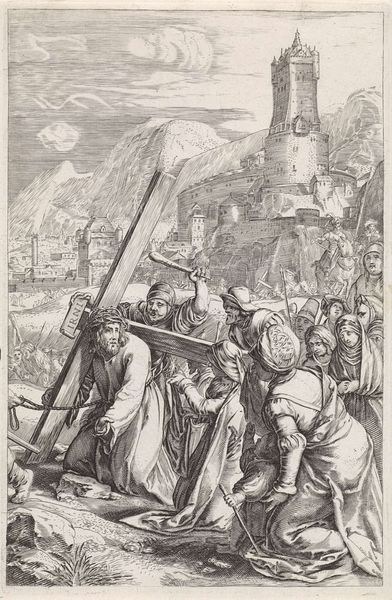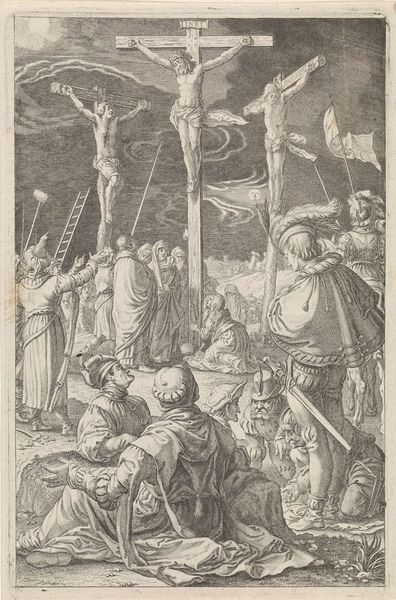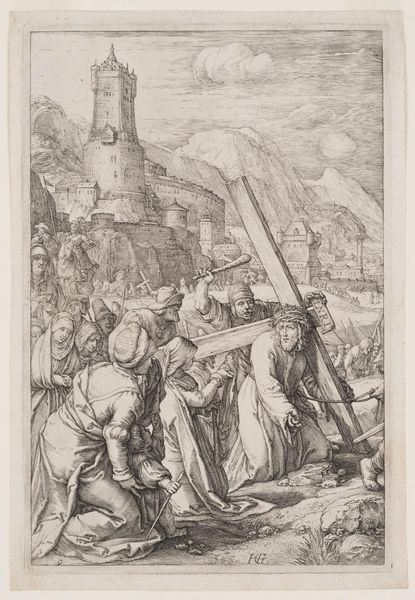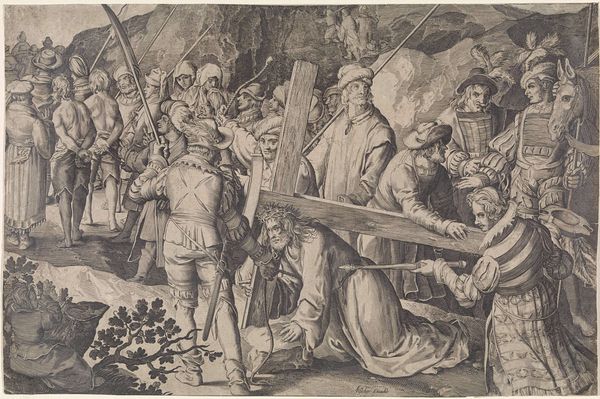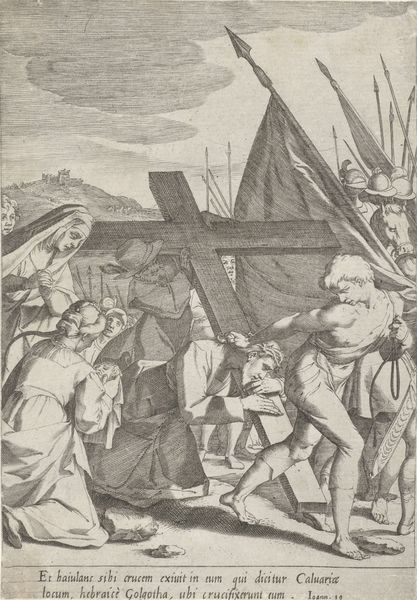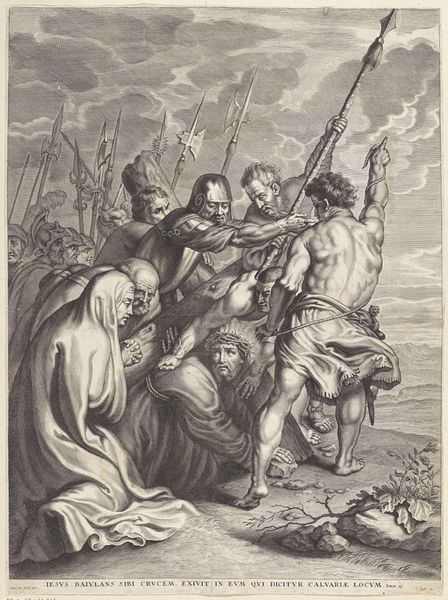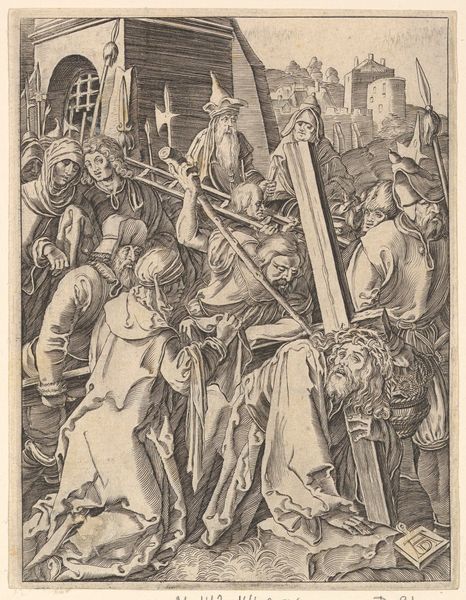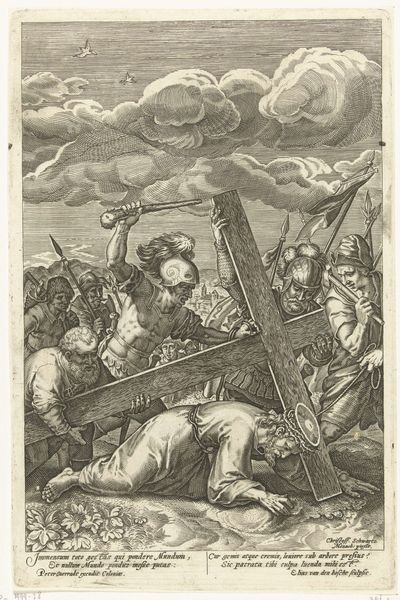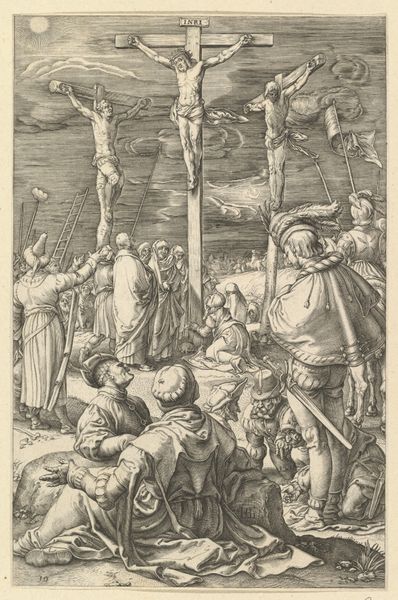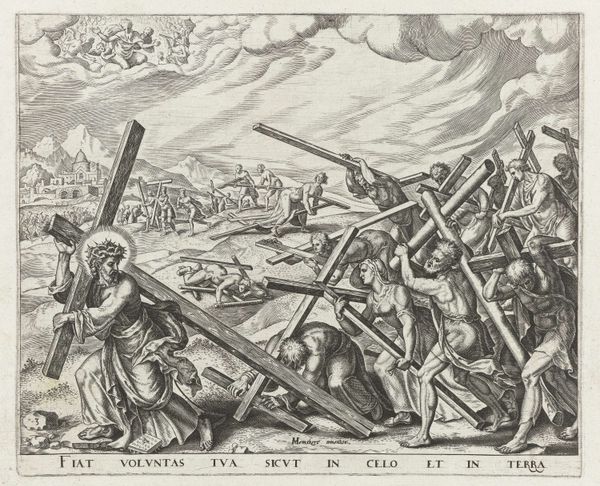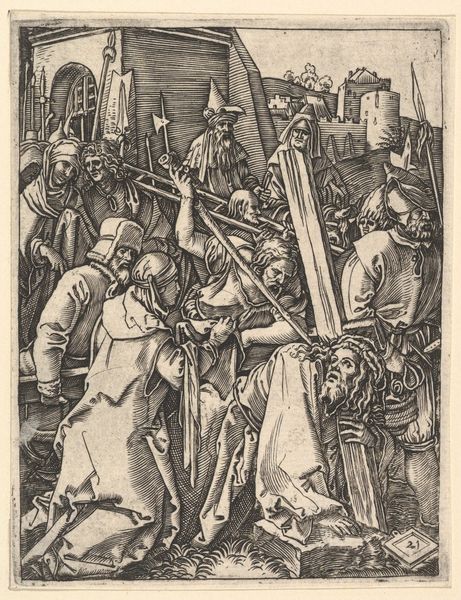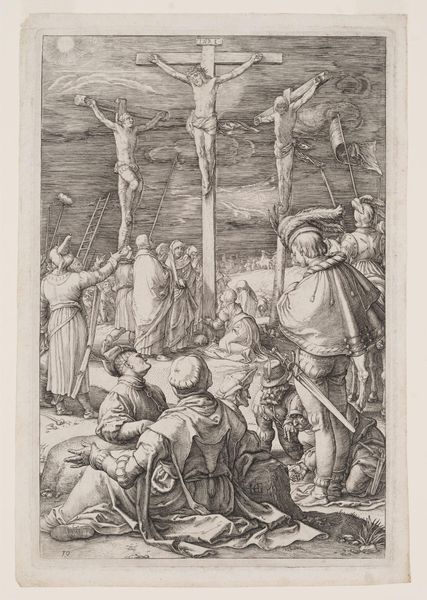
print, engraving
# print
#
landscape
#
figuration
#
history-painting
#
northern-renaissance
#
engraving
Dimensions: height 190 mm, width 127 mm
Copyright: Rijks Museum: Open Domain
Curator: So, here we have Abraham Hogenberg’s “Kruisdraging,” or “Bearing of the Cross,” an engraving made sometime before 1653. Visually, it's... dense. An awful lot happening in monochrome. Editor: Yes, immediately I am struck by this crush of humanity struggling upward! And the stark black and white gives it such a raw, immediate feel. It really amplifies the emotional intensity, don't you think? All that labor evident in the production! Curator: It's definitely got that Northern Renaissance meticulousness in the details – look at the figures, all straining and individual, the town way off in the distance behind the mountains... Feels like he wanted to show you everything he could see and imagine. I find it so compelling—a window into a different way of feeling. Editor: Absolutely. And notice the medium itself, engraving: lines etched into a metal plate, ink forced into them, pressed onto paper... a whole lineage of craft and skill contributing to this reproduction of a crucial religious subject matter! The sheer mechanical effort resonates with Christ's burden, quite literally a material burden. Curator: I’d never quite thought of it like that, connecting the physical labor of creating the print to the act of bearing the cross. That's insightful! Makes me consider what Hogenberg may have wanted to express about both earthly and divine struggle. Editor: And it highlights the context! Prints like these were made to be disseminated. How many hands handled this very piece? Who owned it? Did it offer religious solace? The history embedded is not only the scene itself, but of its social life too. Curator: Right, prints made art and ideas accessible to a wider audience – a fascinating thought. Before the internet, these were the viral images! Still, for me, it remains something more intimate as well; an artifact from someone else's deeply felt world. Editor: Indeed. I find myself wondering about the paper used here and the socioeconomics that factored into that element; maybe even what type of press transferred the image! These traces of production connect to both religious narrative and political distribution. It allows us to appreciate art’s journey out into culture in all its multifaceted form. Curator: Thanks, that's provided an entirely fresh way for me to reflect on it. Editor: And you, a spiritual undercurrent through the lines. Thanks.
Comments
No comments
Be the first to comment and join the conversation on the ultimate creative platform.
